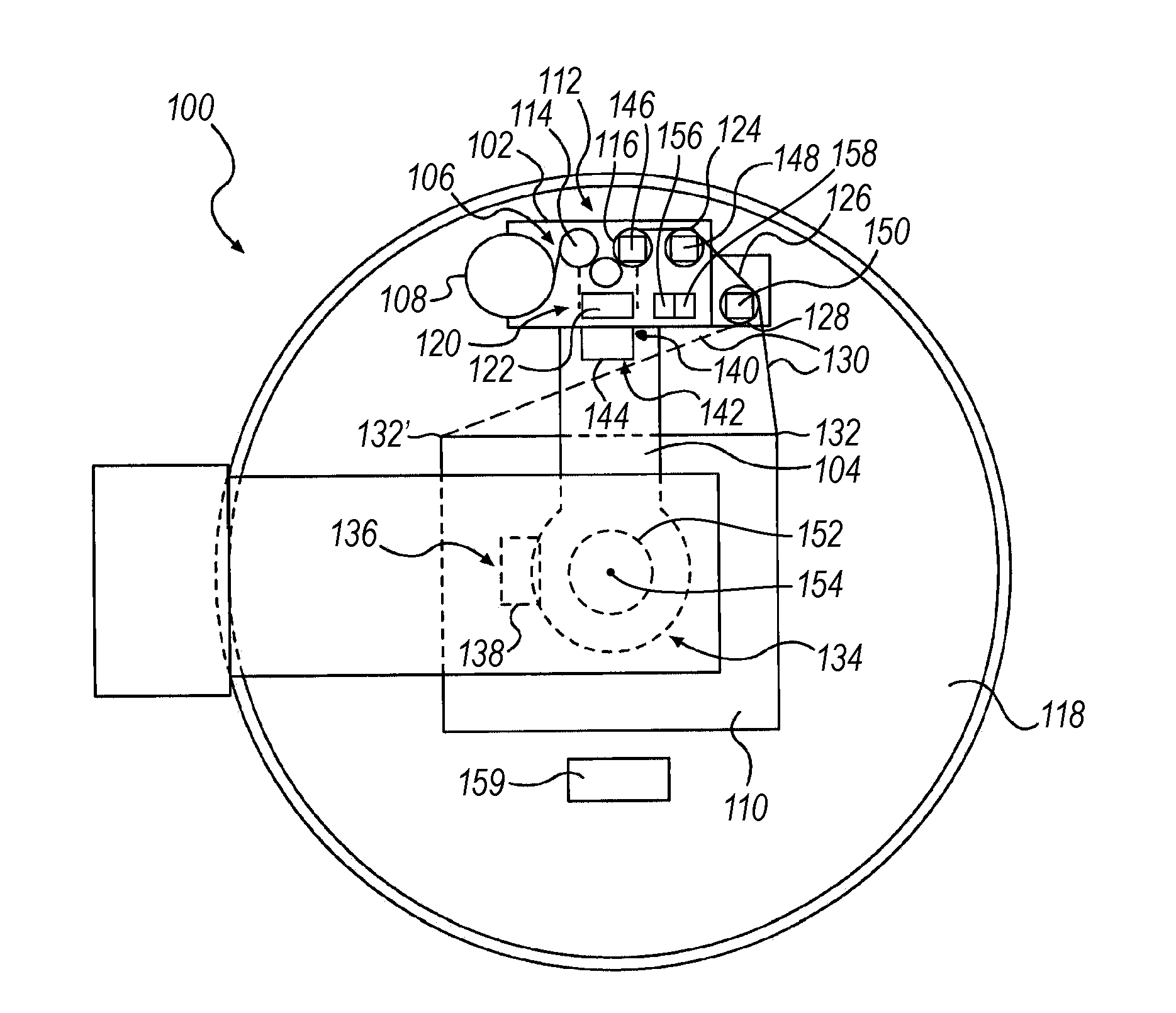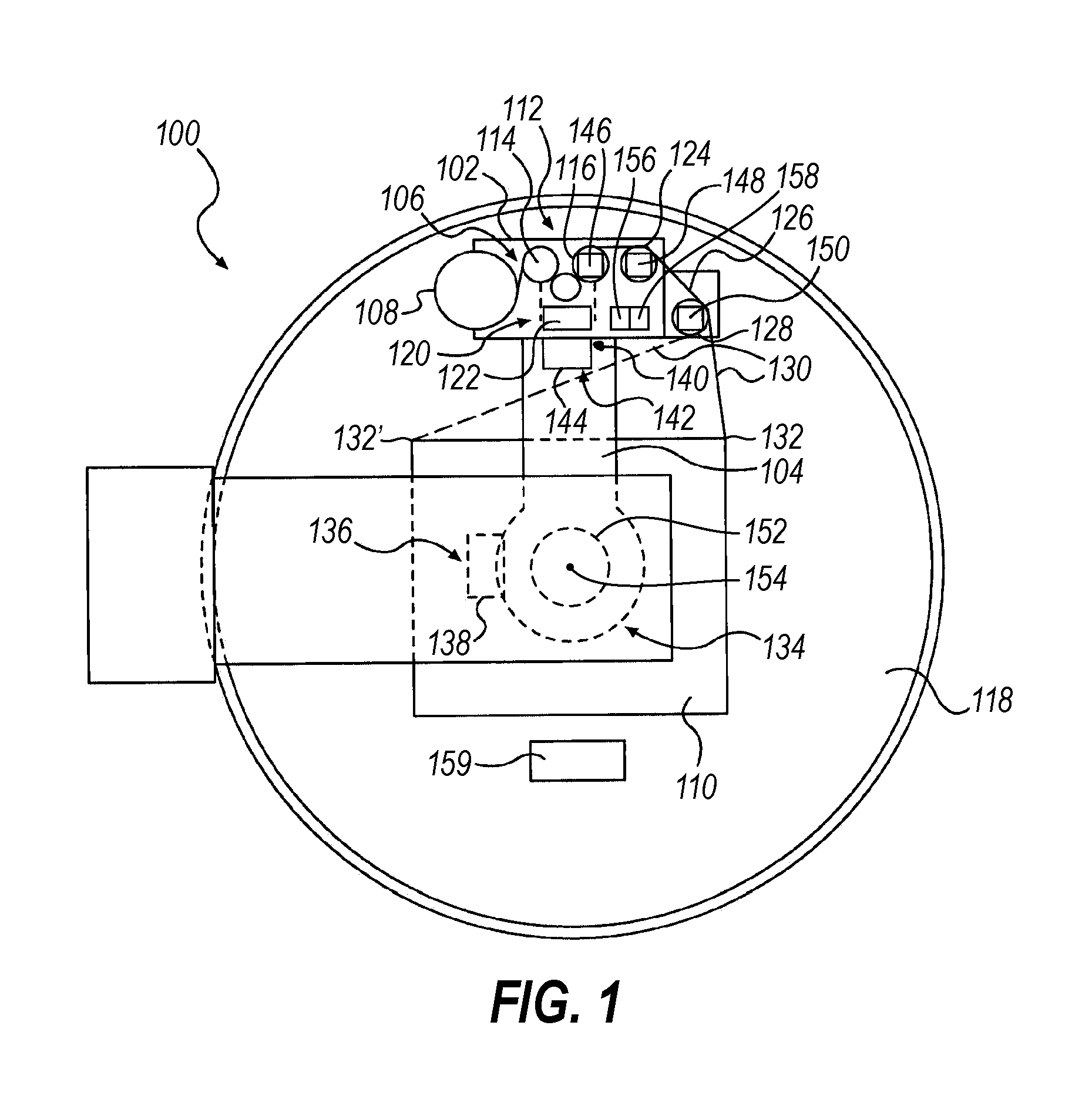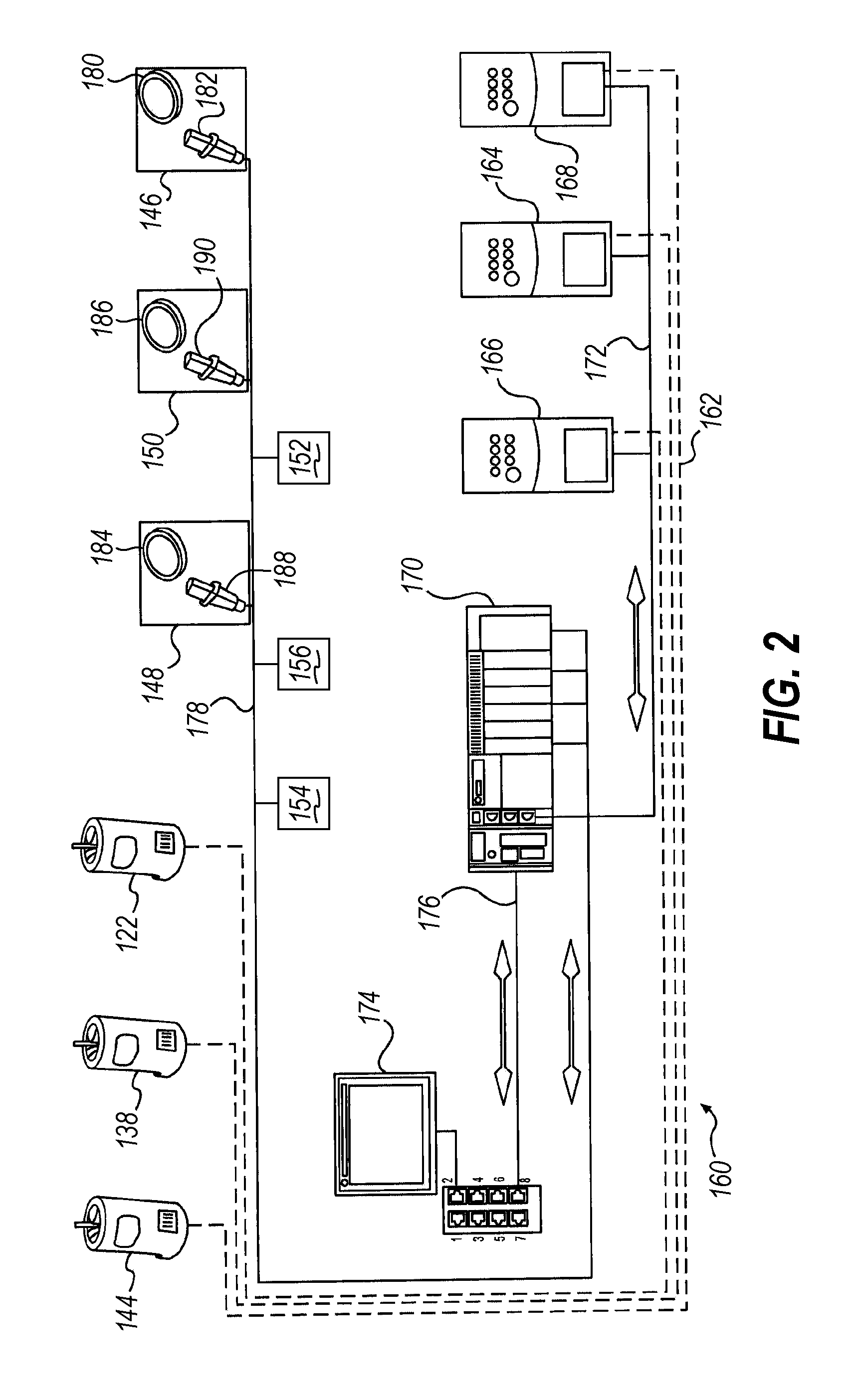The wrap force, however, is a force that fluctuates as packaging material is dispensed to the load due primarily to the irregular geometry of the load.
In particular, wrappers have historically suffered from packaging material breaks and limitations on the amount of wrap force applied to the load (as determined in part by the amount of pre-stretch used) due to erratic speed changes required to wrap loads.
In other instances, when the
demand rate for packaging material by the load is greater than the supply rate of the packaging material by the packaging material dispenser, breakage of the packaging material may occur.
Variations in demand may make it difficult to properly wrap the load, and the problem with variations may be exacerbated when wrapping a load having one or more dimensions that may differ from one or more corresponding dimensions of a preceding load.
The problem may also be exacerbated when wrapping a load having one or more dimensions that vary at one or more locations of the load itself.
With the ever faster wrapping rates demanded by the industry, however, rotation speeds have increased significantly to a point where the concept of sensing changes in force and altering supply speed in response often loses effectiveness.
Given also that the rotating
mass of a packaging material roll and rollers in a packaging material dispenser may be 100 pounds or more, maintaining an ideal dispense rate throughout the relative rotation can be a challenge.
Initial acceleration must pull against clamped packaging material, which typically cannot stand a high force, and especially the high force of rapid acceleration, which typically cannot be maintained by the feedback mechanisms described above.
As a result of these challenges, the use of high speed wrapping has often been limited to relatively lower wrap forces and pre-stretch levels where the loss of control at high speeds does not produce undesirable packaging material breaks.
In addition, due to environmental, cost and weight concerns, an ongoing desire exists to reduce the amount of packaging material used to wrap loads, typically through the use of thinner, and thus relatively weaker packaging materials and / or through the application of fewer
layers of packaging material.
As such, maintaining adequate containment forces in the presence of such concerns, particularly in high speed applications, can be a challenge.
Another difficulty associated with conventional wrapping machines is based on the difficulty in selecting appropriate
control parameters to ensure that an adequate containment force is applied to a load.
The control of the roll
carriage in this manner, when coupled with the control of the wrap force applied during wrapping, may result in some loads that are wrapped with insufficient containment force throughout, or that consume excessive packaging material (which also has the
side effect of increasing the amount of time required to wrap each load).
In part, this may be due in some instances to an uneven distribution of packaging material, as it has been found that the overall integrity of a wrapped load is based on the integrity of the weakest portion of the wrapped load.
Thus, if the packaging material is wrapped in an uneven fashion around a load such that certain portions of the load have fewer
layers of overlapping packaging material and / or packaging material applied with a lower wrap force, the wrapped load may lack the desired integrity regardless of how well it is wrapped in other portions.
Ensuring even and consistent containment force throughout a load, however, has been found to be challenging, particularly for less experienced operators.
Traditional
control parameters such as wrap force, roll
carriage speed, etc. frequently result in significant variances in number of packaging material
layers and containment forces applied to loads from top to bottom.
Furthermore, many operators lack sufficient knowledge of packaging material characteristics and comparative performance between different brands, thicknesses, materials, etc., so the use of different packaging materials often further complicates the ability to provide even and consistent wrapped loads.
As an example, many operators will react to excessive film breaks by simply reducing wrap force, which leads to inadvertent lowering of cumulative containment forces below desired levels.
The effects of insufficient containment forces, however, may not be discovered until much later, when wrapped loads are loaded into trucks, ships, airplanes or trains and subjected to typical transit forces and conditions.
Failures of wrapped loads may lead to damaged goods during transit, loading and / or unloading, increasing costs as well as inconveniencing customers, manufacturers and shippers alike.
Another approach may be to simply lower the speed of a roll
carriage and increase the amount of packaging material applied in response to loads being found to lack adequate containment force; however, such an approach may consume an excessive amount of packaging material, thereby increasing costs and decreasing the
throughput of a wrapping
machine.
 Login to View More
Login to View More 


